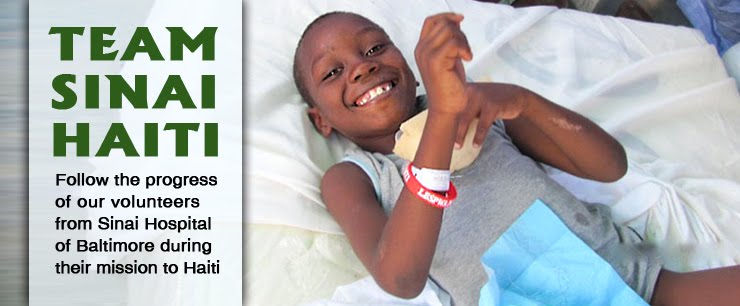Haiti is definitely hungry. Native grown mangoes and plantains are the staple, along with imported rice and beans. Fortunately, there is an abundance of Mango trees, and therein lies the problem. Mangoes can be deadly. Not eating them. They have a thick skin that must be peeled to reach the underlying, sweet, succulent meat. The rind shields the edible fruit from bacteria and other pathogens. It is not eating the mangoes that is deadly, but harvesting them. While we were at the Adventist Hospital last week, we admitted two young men with serious injuries sustained when they tried to quench their hunger by climbing mango trees to pick the fruit. It turns out this is an international problem, not limited to Haiti. In all parts of the developing world, the mango is known to be deadly to those who climb in search of its fruit.
 Our first mango victim was a 17 year old boy, electrocuted by a wire passing through the branches of the tree he was climbing. In electrocution injuries, there is an entrance wound, and often multiple exit wounds. For Jeff, the entrance was in his left wrist, permanently frying his ulnar nerve, and the exits were multiple, in both Achilles tendons, both thighs, and both feet.
Our first mango victim was a 17 year old boy, electrocuted by a wire passing through the branches of the tree he was climbing. In electrocution injuries, there is an entrance wound, and often multiple exit wounds. For Jeff, the entrance was in his left wrist, permanently frying his ulnar nerve, and the exits were multiple, in both Achilles tendons, both thighs, and both feet. I haven’t seen many electrocution injuries, and so I used the marvel of the internet to e-mail a quick photo from my iPhone of the severe wrist burn to my friend Dr. Andrew Pollak, head of orthopedics at Baltimore’s Shock Trauma Hospital. His reply by phone was immediate. “No need to operate immediately. OK to admit, apply Silvedene burn cream dressings, and evaluate in a few days.” Perfect! There is a plastic surgeon from Washington state scheduled to arrive in a few days, right after we leave. This will be right up his alley. We admit Jeff, give him pain medicine, burn dressings, and ask him to wait. For the next two days until we leave, Jeff lays on his canvas army cot in the hallway, never complaining, waiting for the plastic surgeon. I don’t have the heart to tell them that he would lose half of his wrist, and that his ulnar nerve will never again function. By coincidence, Dr. Pollak, who has been heavily involved in rebuilding Haiti’s orthopedic infrastructure, will be in Port au Prince the next day, and I show him Jeff during a quick visit he made to Adventist Hospital.
The second mango victim was even more severely injured. John, originally from the Dominican Republic, desperate for food, fell from the mango tree he was climbing, and sustained a devastating and irreversible spinal cord injury when his 12th Thoracic vertebra dislocated one inch away from his 1st Lumbar vertebra. He stoically accepted his fate, though one point indicated he would prefer to be dead. There is not much that can be done, other than to repair the bone injury with rods and screws, allowing the patient to sit in a wheel chair. We heard that there is a spinal cord rehabilitation unit somewhere in Haiti, so there is hope for John after all. Haiti is tough enough with an intact spinal cord. As a paraplegic, you are really in big trouble in Haiti. Scott Nelson, our host, is an accomplished spinal surgeon, and he deftly reduced the fracture dislocation, and rodded the spine with modern state of the art pedicle screw instrumentation, allowing John to be sitting up the very next day. The surgery came none too soon, as when we turned John to position him face down for the surgery, he had already started to develop pressure sores on his back from laying on the narrow canvas army cot.
The surgery had been put off in favor of more urgent procedures, but finally, after waiting for two days, we put him on the schedule yet again, even though it meant starting the case at 9 pm and finishing at midnight (with one more to follow...) To my knowledge, Adventist Hospital is the only facility in PAP set up to operate on spinal fractures. Scott has really built up an incredibly versatile orthopedic unit here.
--John Herzenberg





That man is so lucky that you were there to help. I watched the clip on youtube about your International work. Congratulations.... I was very inspired....
ReplyDeleteSincerely,
Joanne
Awesome blog..Must say very informative With Good Pictures , We really like it. We provides
ReplyDeletetempo traveller in faridabad
Tempo traveller rental faridabad
Hire tempo traveller faridabad
Luxury tempo traveller in faridabad
Tempo traveller on rent in faridabad
9 seater tempo traveller in faridabad
12 seater tempo traveller in faridabad
17 seater tempo traveller in faridabad
20 seater tempo traveller in faridabad
26 seater tempo traveller in faridabad
for easy travel call us +91-9560075009
Find us on Youtube: Tempo traveller on rent
Faridabad location: FCA-1405, Block - C, SGM Nagar, Sector 48, Faridabad, Haryana 121001
Ballabgarh location: Plot No 2 , Near Rawal International School, Faridabad, Haryana 121001
Gurgaon location: F28, 1A, DLF Phase 3, Sector 42, Gurugram, Haryana 122002
Noida location: N 1106, Sector120, Amrapali Zodiac, Noida, Uttar Pradesh 201301
Delhi location: 118, Vardhman AC Market CSC Block - E, Sec,18 Rohini, Delhi, 110089
Ghaziabad location: Flat No : 1304, Sector 16A, Sector 16, Vasundhara, Ghaziabad, Uttar Pradesh 201012